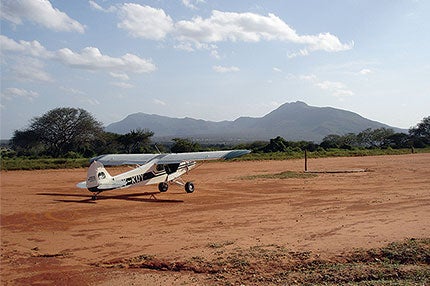 It doesn’t matter whether you’re in the bush or at a big towered airport—etiquette is important. |
Small general aviation airports around the country, indeed around the world, are the safest, most hospitable places I know. I can leave my car unlocked; I usually don’t even shut my hangar door when I’m out flying locally and, to this day, I doubt I’ve ever had anything taken. Airport people and pilots in general are an honest and respectful sort—a cut above the rest.
Since 9/11, Homeland Security has mandated fences—big chain-link fences—at most small airports, particularly those with commercial airline service. In the interest of security, the fences and gates are designed to keep people out, but as I’ve found when I forget my gate card, they’re also designed to keep people in. The gate near my hangar even has an annoying speed bump because an eager TSA employee decided she could crawl under it.
At the St. Augustine Airport (they now have a corporate-sounding name for it that no one I know uses: Northeast Florida Regional Airport), we have our share of chain-link fences and carded gates, but as long I’ve been there, I’ve never heard of random acts of theft or vandalism, that is until the fences went up. In 2005, a young man with a more than a few loose screws stole a Citation 7 one night and flew it to an airport in Georgia to give his friends a joyride. Remind me not to be friends with this guy. He was mad as a hatter and didn’t have a Citation type rating, but I do find it a little ironic, and smugly amusing in a perverse way, because it happened well after 9/11 and the erection of many gates and fences around the airport.
I don’t mind a little TSA action when I’m boarding an international flight, but I wish they’d keep their noses out of GA airports’ business. The fences are doing more harm by keeping the good kids out. If undesirable people want access, they’ll always find a way.
Am I on a rant? I hope so, because airplane people and the people that aviation attracts are usually considerate and well behaved. But of course, we all do dumb things on occasion, usually inadvertently (hence those wonderful NASA reporting forms), when we’re new to something, a little clueless or maybe just distracted. We don’t mean to be discourteous, but sometimes, we just don’t know what the rules are, and someone has to tell us.
For example, let’s take an old favorite: “hangar blasting.” Sooner or later, we’ll all be guilty of doing this, and we’ve all been victims. Hangar blasting is when a taxiing airplane blows its prop wash right into your hangar, blowing posters off the wall, dirt on your airplane, and putting grit in your hair and teeth. The only thing you can do when someone blasts you is close your eyes, grimace and wait for it to be over. It’s really one of the worst things a pilot can do when they come taxiing in; instead of swinging the tail in the proper direction away from the hangar, they swing toward it. It also happens when a pilot doesn’t pull the mixture soon enough as they turn the tail toward a hangar. Either way, it’s a blast.
Speaking of prop wash, after you’ve taxied your airplane to the run-up area to get ready for takeoff, it’s always a good idea to keep those who might be holding behind you in mind. Good manners dictate you turn your airplane slightly away from those behind you and into the wind for your run-up to keep the prop wash from blasting the ailerons of the airplane behind you, and it’s better for the engine because it keeps it cooler. After your run-up, gently turn your airplane back to any position you desire and carry on.
While I’m on the subject, if at all possible, please don’t hog the run-up area. There might be someone behind you ready to take off before you who doesn’t have air-conditioning (like me), sitting there sweating it out while you go through your checklist with your student.
About engine run-ups!why do some people insist on doing annoying and unnecessary long engine power checks on the taxiway near their hangar and not at the run-up area? There’s a reason that the apron near the departure end of the runway is called the “run-up” area. We all understand if you’re working on your airplane and need to run the engine up, but even then, I’ve seen a lot of people taxi their airplanes to a “run-up” area away from hangars. It’s just good manners!
Speaking of good manners, hogging the self-serve fuel pit is never a good idea. When you’re done refueling, it’s a good idea to push your airplane out of the way in case someone else taxis up for fuel. If you go into the FBO to use the head, push your airplane out of the way first. Think of pulling up to a crowded gas station in your car, and empty cars are blocking the fuel pumps while their owners are inside getting coffee. It’s kind of annoying. And, why not offer to help push the next person’s airplane up to the pump once you’re out of the way? An extra hand is always appreciated, but always ask permission first.
Unless I know you very well or have asked for your help, I’d prefer that you don’t push, lean against or otherwise touch any part of my airplane. Imagine your surprise if you were in a parking lot talking with a friend, and he or she put a mug of coffee and a cardboard box on the hood of your car while you were chatting. It would be bizarre. Only pirates board boats without asking, yet we’ve all seen people set their kids on the wing of an airplane on static display at an airshow. It’s not cool, but it goes with the territory, because these people are uneducated. I know how it feels to want to touch the fabric on a biplane or run my hands down the smooth composites of an Extra. Airplanes are beautiful and intriguing, and they beg for your touch, but please ask permission before touching someone else’s airplane.
This brings up my next topic—kids. Airport kids are brought up to respect airplanes. They don’t throw balls or other toys near them, and they don’t run around or under them. They also keep their distance from props. I cringe when I see a kid at an air show going anywhere near a prop, much less touching one! I don’t even touch a prop until I check that the mags are off. Please teach your kids (and dogs) good airport manners.
Another thing that bugs me is seeing someone drive too fast on the airport. If I see someone speeding off somewhere, I think there must be an emergency, and my heart races. Rushing around airplanes in general is disconcerting. I once had a mechanic who was always rushing. I spoke to him about it and asked him to slow down. As soon as you start rushing, you start making mistakes.
Of course, I’m as guilty as anyone of doing dumb things. One sunny spring day in Alaska, when I was working on my ratings, I decided to fly to the Willow Airport north of Anchorage to do some touch-and-goes. Springtime Alaska is also known as “break-up,” which is when the winter ice starts melting and things tend to get soggy, especially gravel and dirt strips like the Willow air strip. After I did my first landing, I realized the strip was kind of soft, so I continued on thinking what a good opportunity it would be to work on soft-field landings! After a couple of touch-and-goes, I noticed a guy sitting just off the departure end of the runway in a pickup truck. At first, I thought he might be admiring my piloting prowess, but then I caught another vibe—he was glaring at me and he was very pissed off. It took a minute, but I figured it out when I looked down the runway and saw what looked like long shiny and deep canyons of mud that my wheels had carved into an otherwise pristine strip. Why he didn’t shoot my tires out, I have no idea. I took off and never went back, still ashamed to this day. I was such an ignoramus!
We all do dumb things, and I’ve probably done them all. I’m sure I’ve hogged the self-serve, driven too fast, done a run-up with someone behind me, and I’m sure I’ve blasted a hangar or two, and who knows what else, not to mention ruining a perfectly good gravel runway. Most people are too polite to criticize, but I’ve really appreciated it when people have told me what the protocol is. There’s a saying that a master is someone who has been doing something longer than you have, so it’s okay to educate others as long as you do it in a kind way. Just think of how it was when you were learning. Most of the dumb things we do are from ignorance, not from bad intentions. It takes time to get experience and become savvy about the rules of the road and the air.
Good neighbors are neighbors with benefits. If you’re a good neighbor in my ‘hood, I’ll lend you a screwdriver, offer you a cold glass of water and even invite you to my hangar party (if I ever have one). But if you blast my hangar one more time, you’re definitely off the party list.
Come fly with us! Visit www.pattywagstaff.com/school.html or reach me through [email protected].




